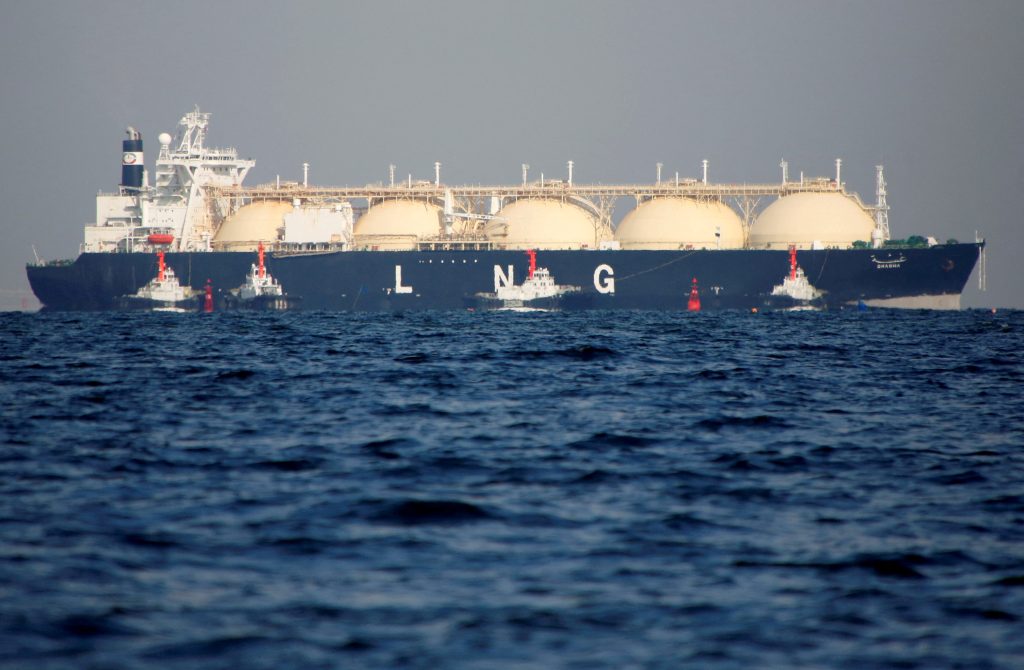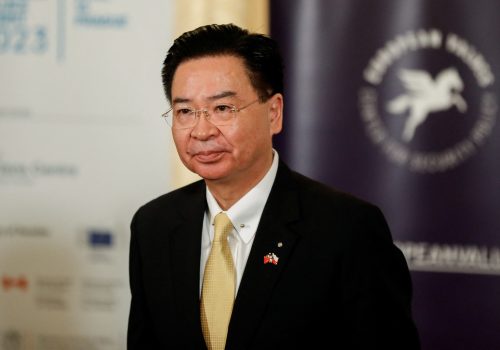Russia’s full-scale invasion of Ukraine has launched many useful comparisons about how Ukraine’s efforts to survive and repel Russian forces might be applicable to Taiwan’s defense against a potential attack by the People’s Republic of China (PRC). Taiwan and its partners, for example, could directly apply a number of military and economic statecraft lessons against China. Energy security is more complicated, however. The Kremlin’s invasion of Ukraine clearly demonstrated that energy security and national security are inseparable, yet Ukraine was a thoroughfare of Russian gas pipelines before the invasion and still has substantial coal reserves and nuclear power. Taiwan, in contrast, is one of the world’s most energy-insecure economies, relying on maritime imports for about 97 percent of its energy.
A review of Taiwan’s energy security challenges is urgently needed to assess its specific vulnerabilities and strengths in the face of attempted coercion by the PRC. Beijing appears increasingly capable of launching a quarantine, blockade, siege, or even invasion of the island.
It’s worth defining these terms. In a PRC quarantine of Taiwan, Beijing would employ the People’s Liberation Army Navy, or PLAN, to interdict all shipping under the guise of inspecting for military kit but allow food and some supplies to pass through. It is possible the PRC believes this insidious tactic is its most attractive option in a Taiwan scenario, due to the limited costs and commitments it would require; the ambiguities it would impose on Western policymakers; and the potential that world public opinion, at least in parts of the developing world, would side with Beijing over the West as economic costs mounted.
Other options appear less probable, but much more coercive and potentially violent. In a blockade scenario, the PLAN would prevent all shipments from entering Taiwan, aiming to coerce the island into surrendering. A siege is a subset of both a blockade and invasion. In this scenario, Beijing would degrade the island’s defensive capability for months before launching an invasion. In the invasion scenario, Beijing would attempt a snap assault, hoping to leverage the element of surprise and secure Taiwan with minimal resistance. A snap invasion is extremely unlikely, however. The weeks that Russia built up its forces on its border with Ukraine before its full-scale invasion—in full view of the world—suggest that the PRC will almost certainly be unable to conceal mobilization for an extremely complicated, massive amphibious assault.
The risks of each scenario are real. The PLAN conducted blockade and quarantine trial runs as recently as April, suggesting Beijing is considering disrupting Taipei’s trade, including its maritime energy imports. Military deterrence is the ultimate guarantor of Taiwan’s freedom, but there are additional nonmilitary steps Taiwan can take with the United States and its allies to ensure its energy needs are met in the event of a crisis.
Taiwan’s Middle Eastern oil imports can be replaced, if necessary
The first issue is whether Taiwan can sustain a reliable supply of energy, which means tracing the energy back to its source. The island is highly dependent on maritime crude oil imports. They accounted for 44 percent of Taiwan’s total energy needs in 2022, and most of this oil comes from the Middle East. Last year, it sourced about 72 percent of its crude oil supply from Saudi Arabia (33 percent), Kuwait (21 percent), the United Arab Emirates (9 percent), Oman (7 percent), and Iraq (2 percent).
The PRC’s economic footprint is expanding in the Middle East and exceeds the Taiwanese or even US presence. Beijing’s crude and condensate oil imports have more than quadrupled since 2006 and stood at over 508 million tons in 2022. China, the world’s largest oil importer, is vital for Middle Eastern economies. In 2022, exports to China accounted for 8 percent of Saudi Arabia’s gross domestic product, 15 percent of Kuwait’s, 9 percent of the United Arab Emirates’, and a shocking 33 percent of Oman’s. Gulf Cooperation Council countries exported nearly 8.5 times more crude oil to China than to the United States in 2022; China’s oil imports are projected to rise further even as US imports plateau or recede. Taiwan imported 41 million tons of crude oil and condensates in 2022, just 8 percent of the PRC’s total.
The PRC’s increasing influence in the Middle East is undeniable, but the risks vis-à-vis Taiwan are manageable. Even in a worst-case scenario—Gulf producers abandoning Taiwan under PRC pressure—the island could find alternative suppliers, though not easily. While oil is a globally traded and largely fungible commodity, refineries require different grades of crude oil, as barrels have distinct sulfur content and densities. If the PRC ever successfully pressured Gulf exporters to halt shipments to Taiwan, the United States and Canada could export a mix of heavy and sulfuric grades—notably Western Canada Select—to supply the island’s refineries. If they have not already, US and Canadian energy officials should hold quiet conversations with their counterparts in Taiwan, South Korea, and Japan about how North American crude oil and oil products could manage disruptions in the event of a blockade.
What about coal, LNG, and nuclear energy?
Taiwan also imports coal and liquefied natural gas (LNG). Of the island’s total energy needs in 2022, coal and coal products imports stood at nearly 30 percent, and LNG imports reached 19 percent. Australia accounted for more than half of Taiwan’s total 2022 coal imports; produces more than enough metallurgical and thermal coal to supply the island; and is not vulnerable to Chinese pressure, particularly since Beijing recently imposed an unofficial, two-year ban on Australian coal imports that was walked back only in February. Taiwan’s LNG outlook is also favorable. The island can count on future LNG imports from the United States, Australia, and Canada, while an active LNG fleet is highly dispersed across European and Asian democracies. Taiwan’s coal and LNG import outlook is relatively positive, outside of a physical blockade.
Nuclear energy plays a largely positive role in Taiwan’s energy security. Nuclear imports—that is, imports of nuclear fuel for use in domestic reactors—stood at 5 percent of Taiwan’s total energy needs in 2022. Once nuclear fuel is shipped to Taiwan, the island’s nuclear power plants can continuously produce zero-emission power for approximately eighteen to twenty-four months. Still, there are reasons why Taiwan’s energy planners consider nuclear energy to be an energy import. Russia is deeply embedded in nuclear energy supply chains, while nuclear exports from Kazakhstan could easily be interdicted by the PRC. Kazakhstan accounted for 43 percent of the world’s uranium production from mining in 2022 and Beijing and Moscow, working together, might work to blockade Kazakhstani energy exports.
Taiwan is currently phasing out its nuclear energy use, as the Democratic Progressive Party and the bulk of the island’s voters are opposed to the technology. Nuclear energy is clean and reliable, and it plays a positive role in the island’s energy security. Still, Taiwan’s concerns about its supply chain—especially in the event of a long-duration quarantine or blockade—are not unfounded.
Beware of the PRC’s maritime blockade capabilities
Taiwan’s dependency on seaborne energy imports heightens the risks of maritime disruption. The PRC navy appears increasingly capable of imposing a physical blockade or quarantine of Taiwan. The PLAN had 351 warfighting-capable ships in 2022 and now outnumbers the entire US Navy by more than fifty ships. Moreover, due to the US Navy’s dispersed global responsibilities, the PLAN enjoys an even larger numerical advantage in the Indo-Pacific theater. The PRC also continues to improve its fleet both qualitatively and quantitatively. The latest US Department of Defense China Military Power Report projects that the PLAN’s battle force will grow to four hundred ships by 2025 and 440 ships by 2030. The US Office of Naval Intelligence predicts that PRC blockade-relevant maritime platforms could exceed eight hundred ships by 2030, after units from the Chinese Coast Guard and maritime militia are included.
The PRC does not just enjoy numerical superiority; it also has a home field advantage. Although some ships and subs are permanently forward deployed in Japan and Guam, the United States and allied navies would have to transit hundreds or even thousands of miles to reach the Taiwan theater. Meanwhile, the PRC’s anti-ship missile range extends several thousand kilometers off its coastline, implying that US and coalition ships would be forced to break a blockade while sailing within the PRC’s anti-access/area denial envelope. Finally, since Taiwan’s large ports are on the western side of the island, US and coalition ships would have to sail directly opposite the PRC coastline.
Coalition policymakers and naval strategists need to consider how a potential PRC maritime blockade can be defeated along every level of the escalation ladder. Some steps include enhancing the credibility of the United States’ and the coalition’s conventional military deterrent; holding key PRC economic, energy, and financial nodes liable to severe sanctions in the event of a prolonged blockade; addressing gaps in overcoming a long-duration blockade; expanding the merchant marine and convoy escort fleet; ensuring ships from allied and partner civilian fleets can “re-flag” as US vessels; and back-stopping shipping insurance markets, as insurance risk premiums would surely spike in the event of a confrontation over Taiwan. Fortunately, US allies comprise six of the top ten owners of the world’s civilian fleet, as measured in deadweight tons carrying capacity.
Indigenous clean energy generation: opportunities and constraints
Taiwan can further reduce its energy security vulnerabilities by developing its indigenous renewable energy resources. While solar and wind cannot solve all of Taiwan’s energy challenges, the PRC will find it relatively difficult to disrupt production of local renewables, especially distributed solar.
Distributed solar can be installed on any rooftop and is extremely difficult to disrupt via cyber or kinetic means if microgrids are employed. However, it suffers from low utilization rates and unfavorable bespoke installation costs. Utility-scale solar is more efficient and less expensive but may be more susceptible to cyberattacks, due to its concentration of panels. More broadly, Taiwan’s solar potential is also constrained by frequent cloudy skies and land scarcity.
Onshore wind potential is greatest on the western side of the island but land use tradeoffs constrain development—especially since Taiwan imports about 65 percent of its food. Still, onshore wind should be a higher priority than food production, as the Berlin airlift demonstrated that airborne food supply chains can break non-kinetic blockades. Additionally, since prepackaged Meals Ready-to-Eat have a shelf life of eighteen months even at ninety degrees Fahrenheit, there are relatively few risks of the PRC “starving out the island.”
Offshore wind is a promising technology for Taiwan. A nine hundred-megawatt wind farm off Taiwan’s west coast first produced electricity in early 2022; once fully complete, the installation could power approximately one million homes. Taiwan aims to install 5,700 megawatts of offshore wind capacity by 2025, which would substantially improve its energy security. Still, the Taiwanese military is concerned about offshore wind farms’ radar profile and the vulnerability of turbines and transmission cables to attack. Offshore wind has great potential, but Taiwan needs to balance its military and energy security needs carefully.
There are relatively few risks of Taiwan falling prey to sole-supplier dependency in either solar or wind, despite the PRC’s leading role in both technologies. There is limited international trade in wind turbines due to unfavorable weight-to-value ratios. Taiwan’s offshore wind projects have very strict local content requirements, and the island is establishing more wind turbine facilities. The PRC currently dominates solar market supply chains, producing 75 percent of all finished panels, but the United States and its allies and partners are increasing their own manufacturing capacity. Taiwan will be able to procure wind and solar components from non-PRC sources.
Taiwan’s most effective energy security tool may be to raise electricity tariffs, which would help rationalize demand and incentivize domestic clean energy generation. Raising electricity prices would encourage conservation efforts and make new renewables projects more economically viable, reducing Taiwan’s energy import needs.
Defending Taiwan from a military or energy shock
Taiwan’s energy security challenges are serious, but its chief problems are fundamentally military and naval. If the United States and its allies and partners cannot deter a PRC military invasion or naval blockade of Taiwan, disaster will likely result. US, Taiwanese, and other coalition forces must maintain credible conventional and strategic military deterrents against the PRC.
The West must walk a diplomatic tightrope to maintain its policy of dual deterrence. While Beijing’s increasingly provocative behavior vis-à-vis Taiwan is worrisome and warrants firm responses, the United States and its allies should also continue to discourage Taipei from undertaking any irresponsible moves toward independence. The West should continue to communicate to Beijing its vital interests in Taiwan while signaling its intent to avoid any unnecessary confrontation or conflict.
Joseph Webster is a senior fellow at the Atlantic Council’s Global Energy Center and its Indo-Pacific Security Initiative. He is also an editor of the independent China-Russia Report. This article represents his own opinion.
Further reading
Wed, Jun 21, 2023
Sanctioning China in a Taiwan crisis: Scenarios and risks
Report By
New research on possible options and their costs of G7 sanctions on China in the event of a Taiwan Crisis.
Mon, Apr 3, 2023
Don’t let Beijing define the narrative of Taiwan’s relations with the world
New Atlanticist By Markus Garlauskas
As Taiwan President Tsai Ing-wen stops in the United States, Beijing is trying to paint reasonable, routine, and restrained actions as risky, worrisome, and escalatory.
Tue, Jun 27, 2023
What’s driving Central and Eastern Europe’s growing ties with Taiwan?
New Atlanticist By Petr Tůma
A new tone toward Taipei in Europe is being set by Czechia and other Central and Eastern European countries. Taiwan has come to the forefront of their attention mainly because of frustration with Beijing.
Image: A liquefied natural gas (LNG) tanker is tugged towards a thermal power station in Futtsu, east of Tokyo, Japan November 13, 2017.



